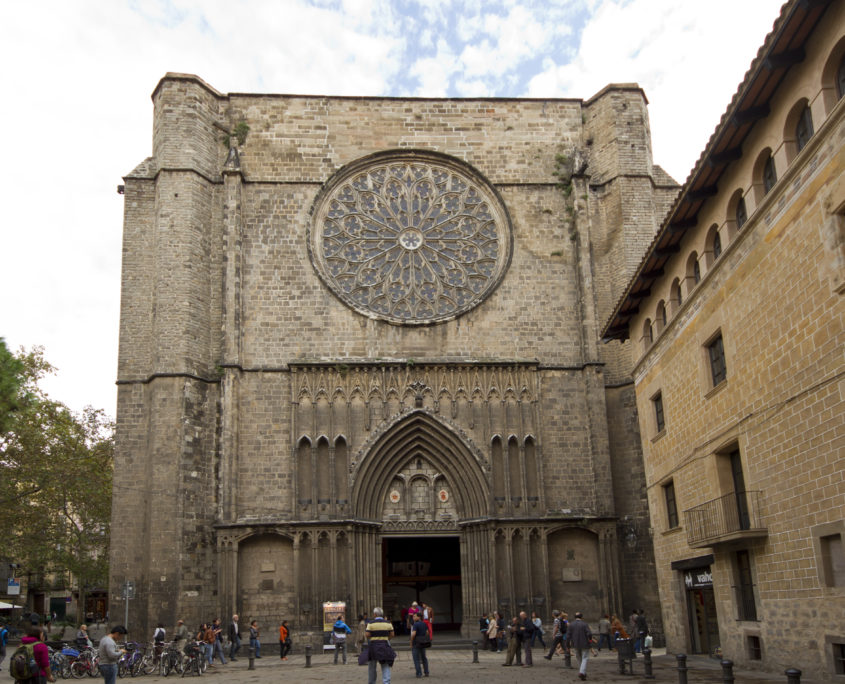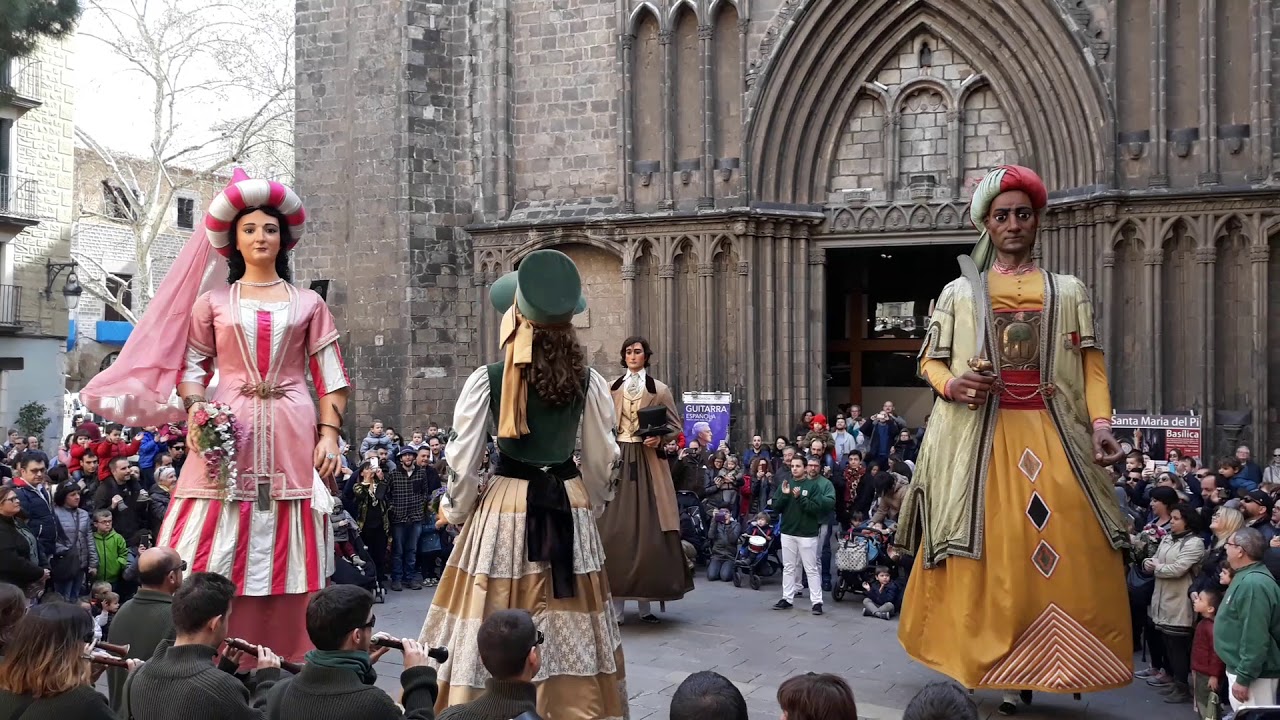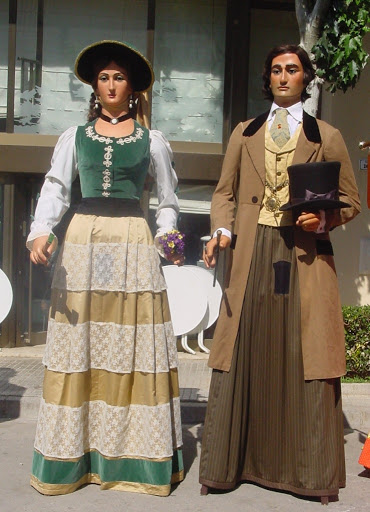The Giants of Santa Maria del Pi
Friday, December 4, 2020 @ 11:01 AM
 When entering Santa Maria del Pi, look directly to your right and you will find four giants staring back at you from inside a floor-to-ceiling glass case. These gegants are wearable puppets. They’re a highlight of parades and Catholic feast days in Barcelona and are known for their traditional dances.
When entering Santa Maria del Pi, look directly to your right and you will find four giants staring back at you from inside a floor-to-ceiling glass case. These gegants are wearable puppets. They’re a highlight of parades and Catholic feast days in Barcelona and are known for their traditional dances.
The largest giants are the oldest, dating from some time prior to 1601. The man is a Saracen, a medieval Muslim and the woman is a medieval lady. They were temporarily retired in 1780 when King Charles III issued a decree declaring them too grotesque for religious celebrations, but they returned in 1799 for the feast of Corpus Christi after a successful petition on their behalf and a formal pardon.
The smaller giants, the petit gegants, joined in the festivities after the 1780 ban was lifted. They’re dressed as a respectable, upper-class couple and their clothing has often changed with fashion.

All four giants were packed in boxes and stored in the bell tower in 1870. At the beginning of the Spanish Civil War they were moved to the city’s historical archives and then to the Monastery of Pedralbes. There they were spared during the Tragic Week of 1936 when members of the Radical Party destroyed many of Barcelona’s churches and monasteries. After the war the giants were moved back to Santa Maria del Pi and were sadly forgotten about.


In 1951 the giants were rediscovered and meticulously restored. Nine years later they were back on the streets performing in festivals. In 1985 they were given names to celebrate the 25th anniversary of their rediscovery. The Saracen is now known as Mustafá and the medieval lady Elisenda (to honour Queen Elisenda de Montcada, the foundress of the Monastery of Pedralbes.) The petit gegants are known as Oriol (for St. José, patron saint of the barrio of Pi) and Laia (a nod to St. Eulalia, the patroness of Barcelona).
You don't have to be registered to leave a comment but it's quicker and easier if you are (and you also can get notified by email when others comment on the post). Please Sign In or Register now.